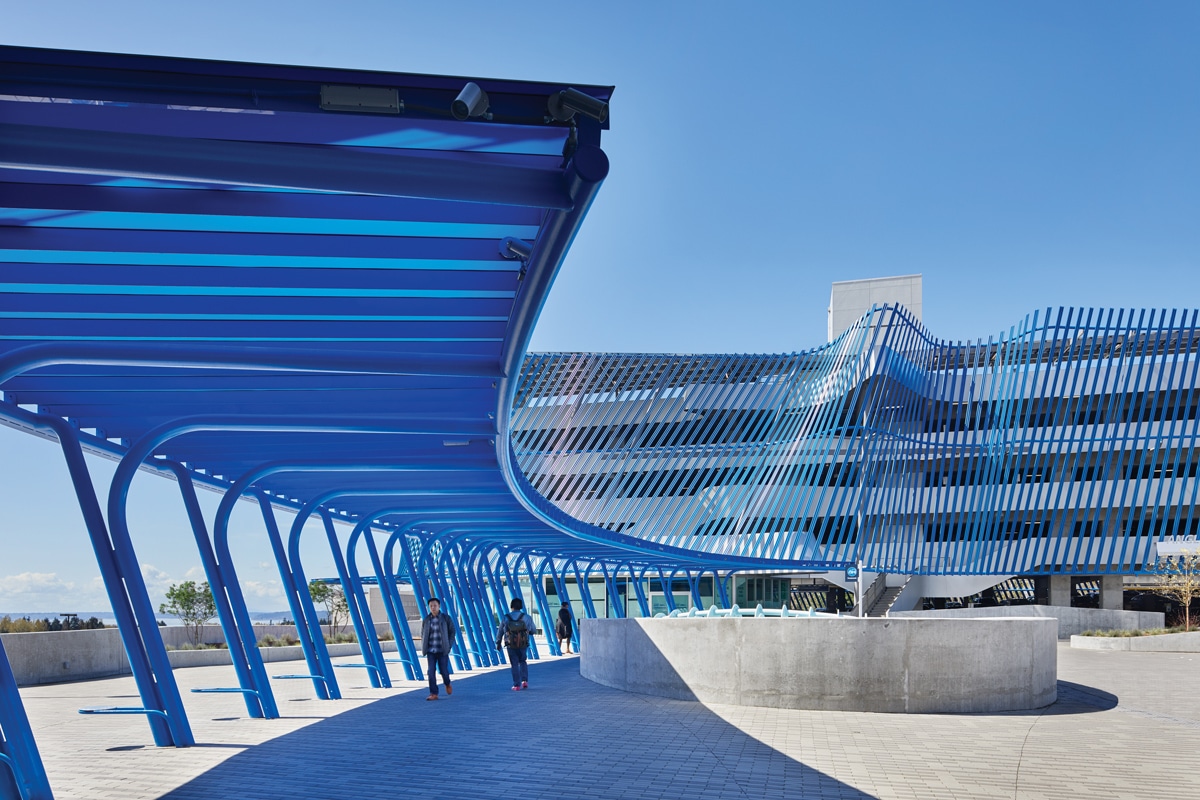Story at a glance:
- Seattle Tacoma International Airport is leading by example when it comes to sustainable development.
- LaGuardia Airport’s New Terminal B was designed to achieve a minimum of LEED Silver certification.
- Angle Lake transit Station near Sea-Tac’s new Annex is part of a greater extension that will continue southbound over the next decade.
Airport terminals are likely not the place you’d imagine going to feel calm, but that was a primary goal for Sean Quinn, HOK’s regional sustainable design leader for the Seattle Tacoma International Airport Concourse D Annex.
Sustainable airport design is quite different from designing a relatively sedentary home or healthy office space, as airport terminals generally see 30,000 to 50,000 people per day. For Quinn, creating a sustainable building for such a large volume of visitors means far more than just building a sound structure.
“It’s about creating a calming environment that’s a good experience for both the seasoned traveler getting on their fifth flight of the week and the nervous traveler who has never flown before,” he says.
Quinn’s specialty is in performance design or, as he explains, “the integration of science into the design process.”
His role in Sea-Tac’s Concourse D Annex project covers the general sustainable management of the project, which ensures Sea-Tac’s LEED certification goals are met and also maintains a close collaboration with HOK’s architectural team. Although the Annex was still in the final stages of certification in late 2019, it was on track to become the first LEED v4 Silver certified airport in the US.
Gaining LEED certification on an airport design is no easy feat.
“A lot of things about LEED are built around the development of buildings in an urban environment,” Quinn says. “There are several prequalified credits with location and site that airports simply cannot achieve.”
Sustainable airport design, by its very nature, means factoring for things like having a long runway for proper landing and takeoff, which requires space that is not typically available in an urban area.
When asked the significance of Sea-Tac’s foreseeable LEED Silver certification, Quinn is pleased with the success of his team’s design.
“The needle has to be thread quite well in order to get any airport LEED certified—let alone certified on an upper level,” he says.
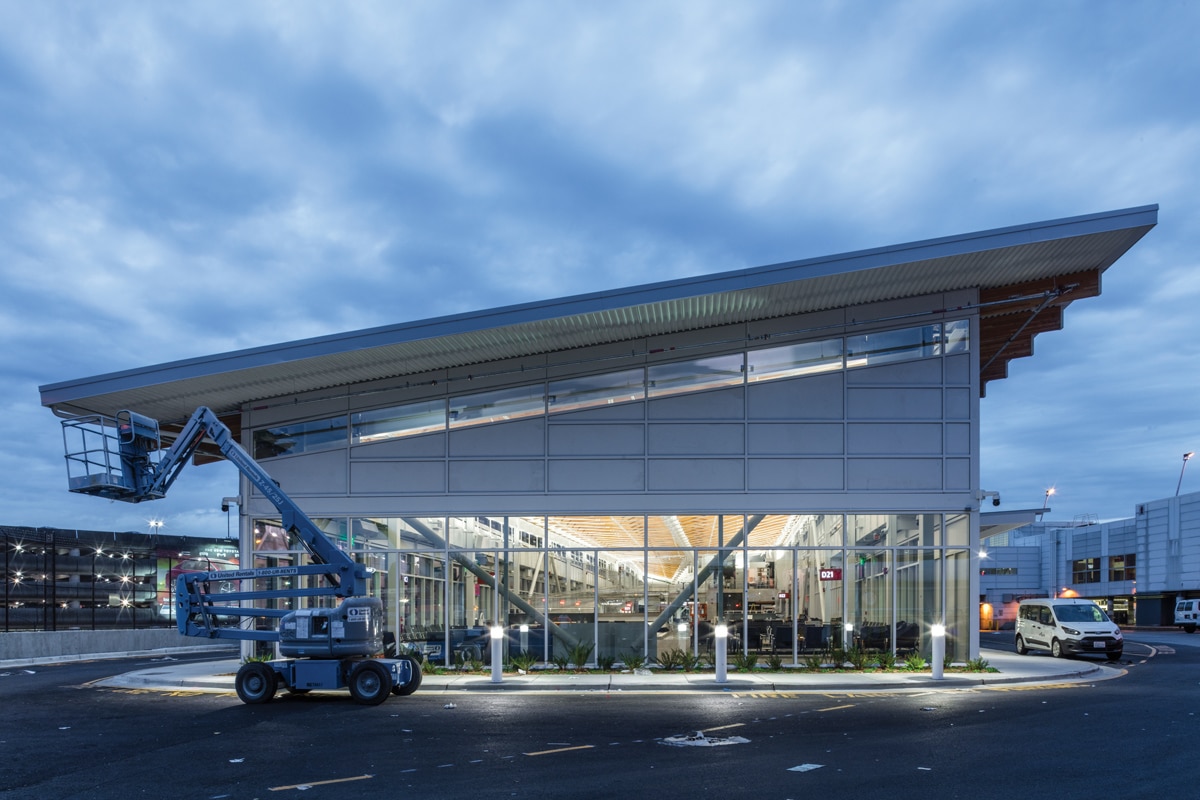
Photo by Heywood Chan, Y-EH PHOTOGRAPHY
Design Strategy at Sea-Tac
The 32,400-square-foot Annex opens six new terminal gates and is expected to relieve peak airport congestion while highlighting the beauty of the Pacific Northwest. Quinn’s sustainable design strategies include everything from the shaping of the roof to handle wind loads and air intake to a daylighting system that not only lights the terminal but also the building’s interior plants.
Quinn worked in close coordination with HOK’s structural engineers to advance the building’s superstructure from that of a typical airport to a hybrid timber and steel system. The innovative design uses a glue-laminated (glulam) timber truss system that crosses over the roof of the building and connects to steel columns.
“I wouldn’t call it the first of its kind, but it is the first installation of glue timber at an international airport in the United States,” Quinn says.
The timber is locally sourced from Douglas Fir trees in Washington and will reduce the building’s embodied carbon. Most large-scale assembly spaces don’t allow for timber use, so the design required extra work from HOK’s higher architectural team. After a life cycle analysis for Washington State code reviewers, the team proved steel beams typically result in terminal bridging, while timber is both more resistant and cost effective. Quinn says, “The sustainable idea is often the straightforward one.”

Sea-Tac East-West Section of Concourse D Annex. Drawing courtesy of HOK
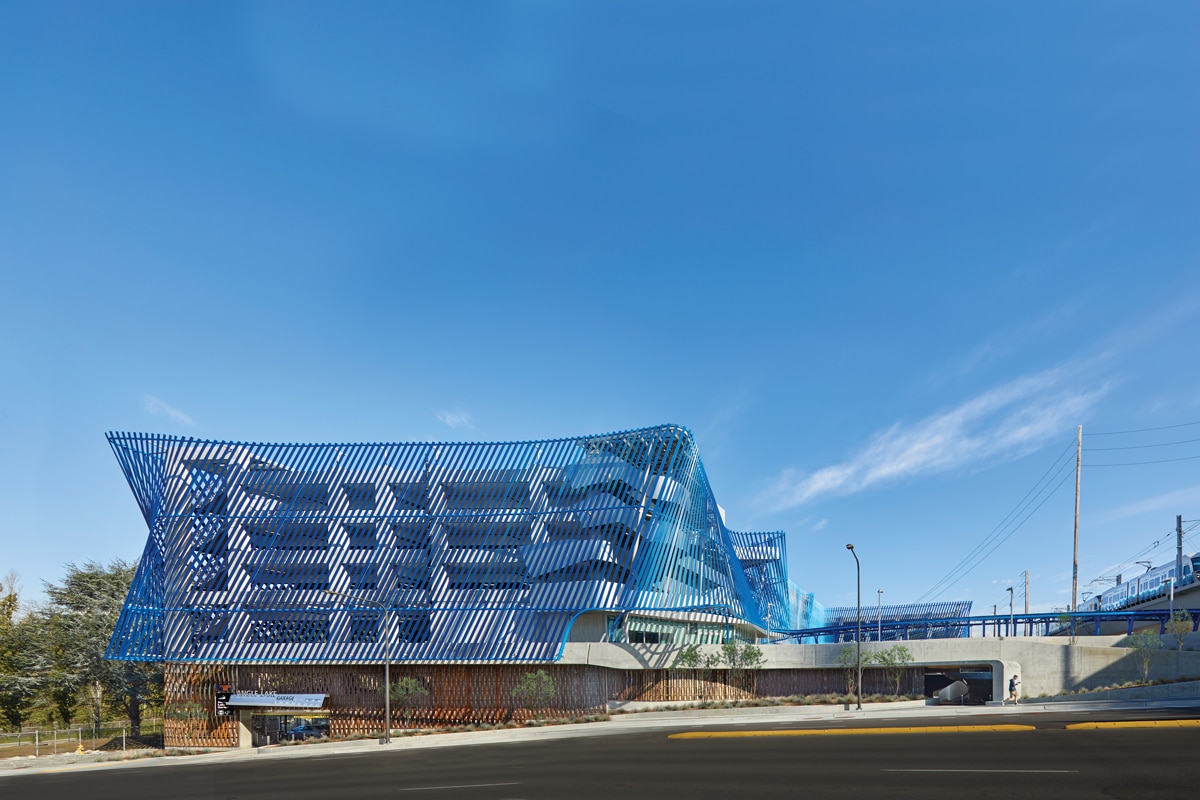
Angle Lake Station near Seattle Tacoma International Airport. Photo by Benjamin Benschneider
Access to Public Transportation
Not far from Sea-Tac’s new Annex is the recently completed Angle Lake Station. The 400,000-square-foot complex is the first station south of Sea-Tac and the southern terminus of the Central Link light rail. It’s intended to be part of a greater extension that will continue southbound over the next decade.
Larry Scarpa, of architectural firm Brooks + Scarpa, says the extension could take a decade or more to complete, which is why he designed Angle Lake to be an adaptable structure. As a terminus, the station’s current traffic mostly consists of passengers parking at Angle Lake to take the train into Seattle. However, once additional stops are constructed south of Angle Lake, Scarpa anticipates some design elements will adjust to meet new needs.
“When Angle Lake is no longer the end station it will see a significant decrease in park and ride travelers, which opens the parking lot for future development,” he says. “Angle Lake station has a lot of public space, like a plaza and event space, that will likely become more useful as the station transitions from a terminus to a stop along the line.” Future development at Angle Lake could include a hotel and housing, turning the station into a fully integrated mixed-use site.
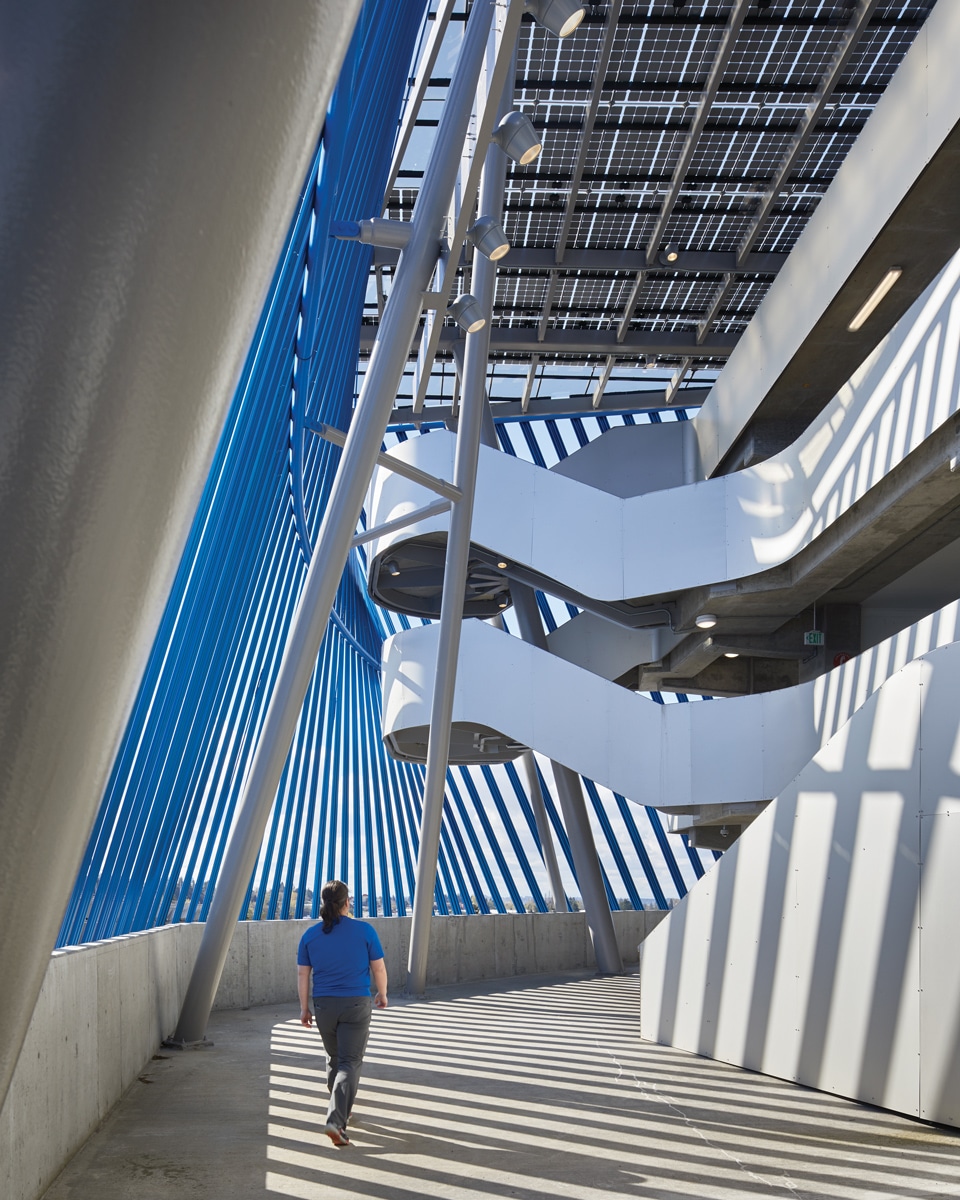
Inside Angle Lake Station. Photo by Benjamin Benschneider
Angle Lake took two-and-a half years from design to completion, which Scarpa says is very fast by industry standards. The LEED-certified project features a 400,000-gallon stormwater retention tank built into the lower level, high efficiency lighting, and landscaping that accommodates migratory birds, which Scarpa says is critical given its location near the airport.
The design was also inspired by American dance choreographer William Forsythe, whose improvisational piece “Dance Geometry” creates geometric forms through light and movement. “The facade appears to be moving and complex, but it is really just a series of lines connected to curved top and bottom cords,” Scarpa says.
The guaranteed maximum cost required Scarpa and his team to deliver innovative design within a fixed budget. Large planks for the facade were built from more than 8,000 smaller pieces using ruled surface geometry, which enabled the design team to build the spatial facade with no cranes or large equipment.
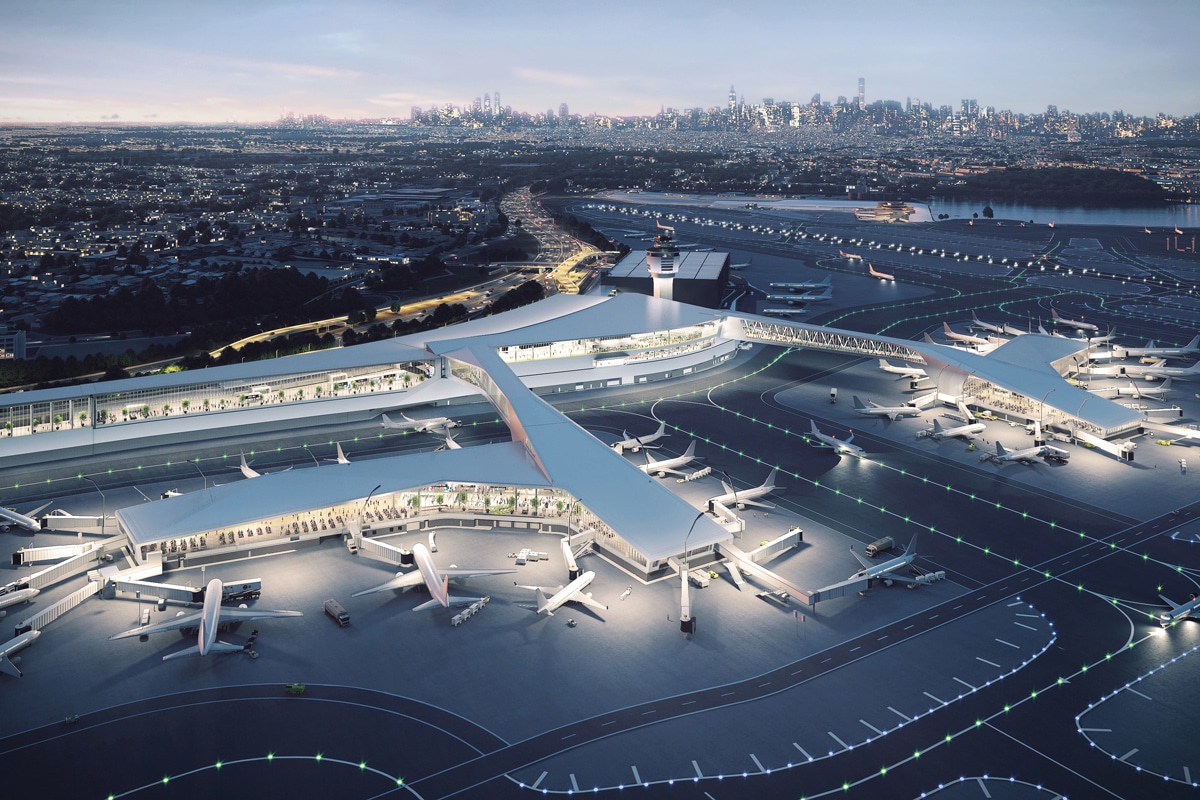
LaGuardia Airport’s New Terminal B is designed to achieve at least LEED Silver certification. Rendering courtesy of HOK and WSP
More Innovation at Airports
But it’s not just Sea-Tac pushing the limits of modern airport design. In December 2018 LaGuardia Airport opened the first 11 gates in its new Terminal B concourse. The concourse is more than 1.3 million square feet and is the first stage in a multi-phase construction plan for an airport overhaul. The renovated Queens airport, which sees 30 million passengers a year, will enhance the passenger experience and achieve impressive LEED certification.
“LaGuardia Airport’s New Terminal B is designed to achieve a minimum of LEED Silver certification and is one of just a few airports of its scale to seek the more stringent LEED v4 distinction,” says Robert Chicas, director of aviation and transportation at HOK. “Sustainable design strategies focus on ensuring optimal building orientation, providing flexibility for change, using natural and locally sourced materials, and making the terminal resilient to major storm events by placing critical systems above flood levels.”
The design plan also includes an operation to reach 80% greenhouse gas reduction by 2050, an overhaul on LGA’s baggage handling system that will use magnetic motors to save at least 37% of energy compared to traditional baggage carousels, and new EPA plumbing fixtures to achieve a 42% reduction in potable water use.
Many of the airport’s sustainable design strategies will also improve the passenger experience.
Chicas says, “Indoor green space is modeled after New York City’s urban pocket parks and includes lush landscaping and sculptural benches. Incoming and outgoing passengers share soaring, airy, grand-scaled sequences punctuated by 55-foot-high ceilings and floor-to-ceiling windows that fill the space with natural light.”
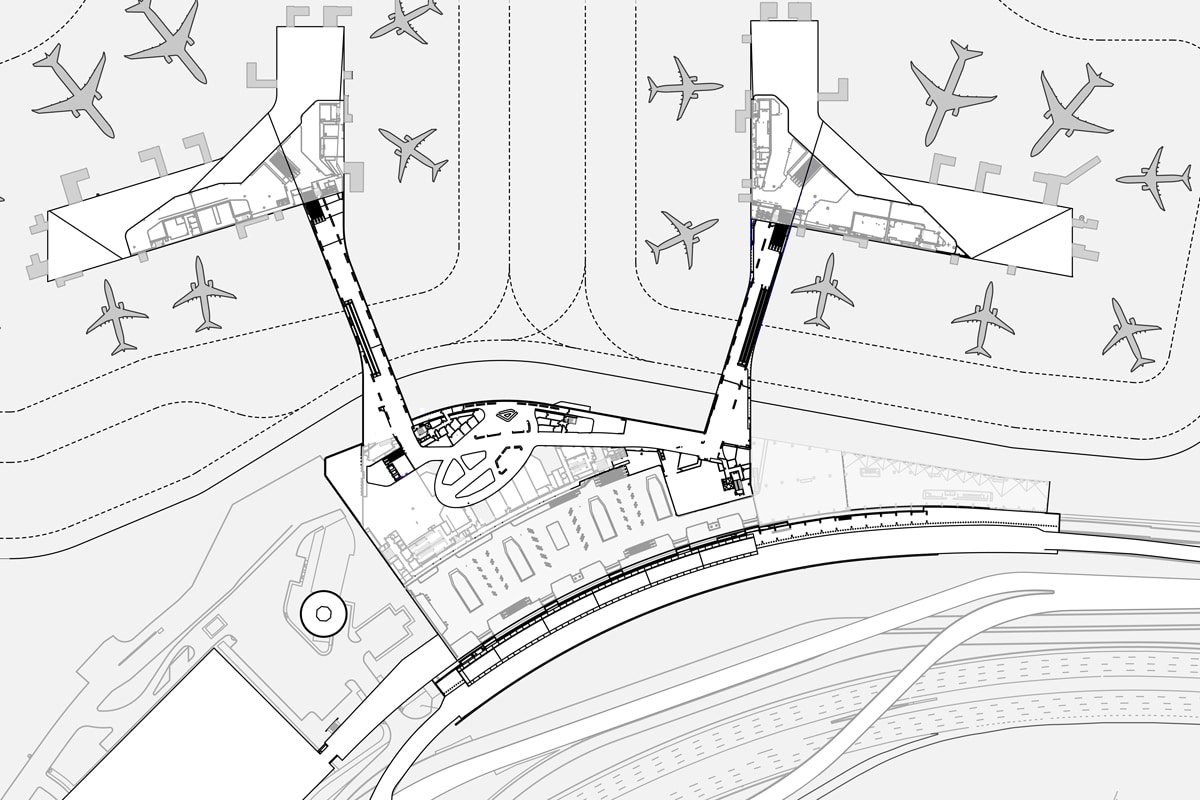
LaGuardia Airport Level 4 Plan. Drawing courtesy of HOK

